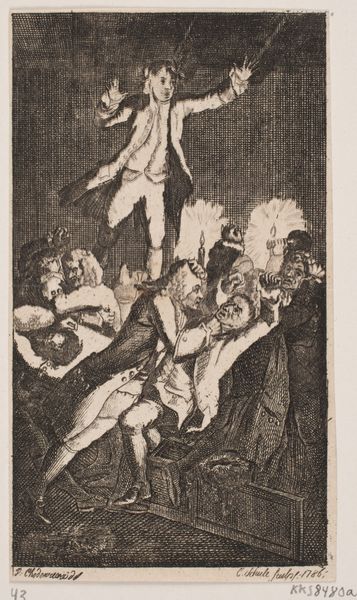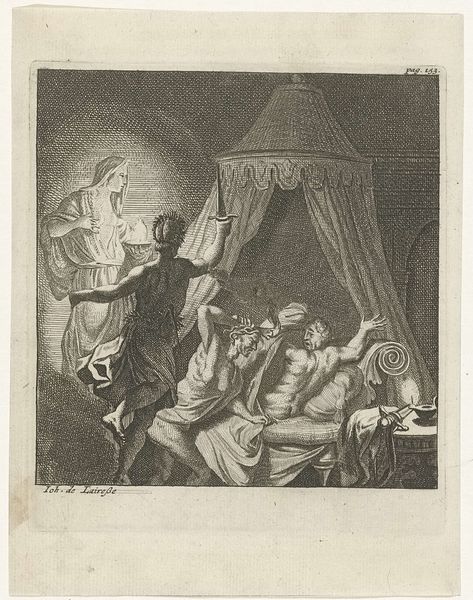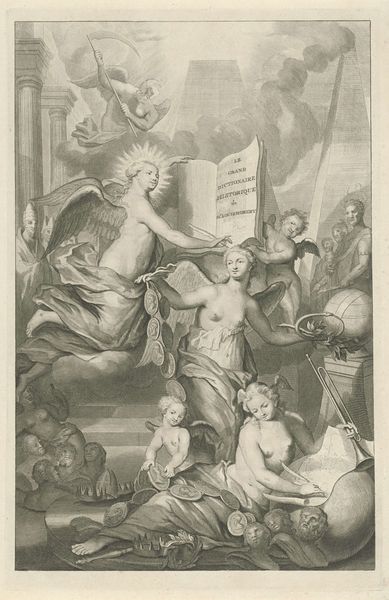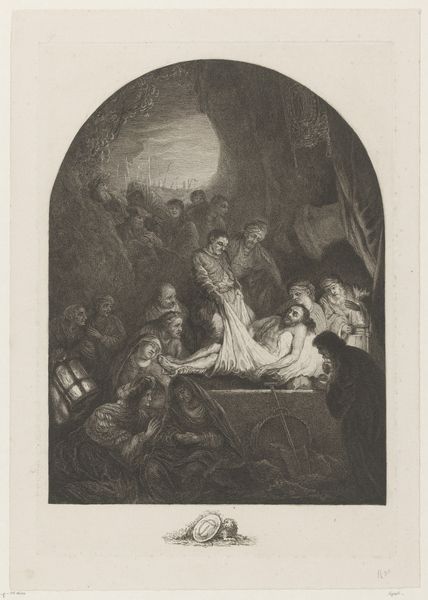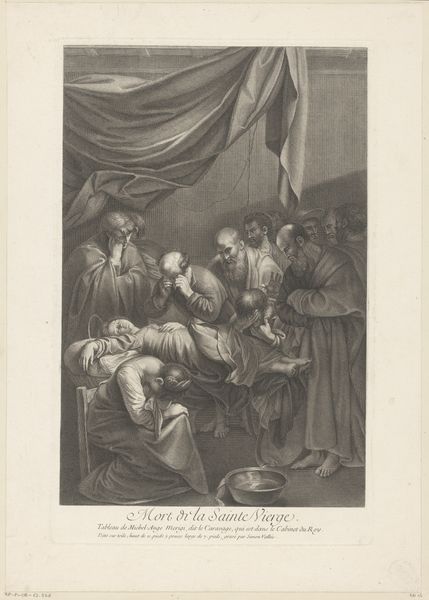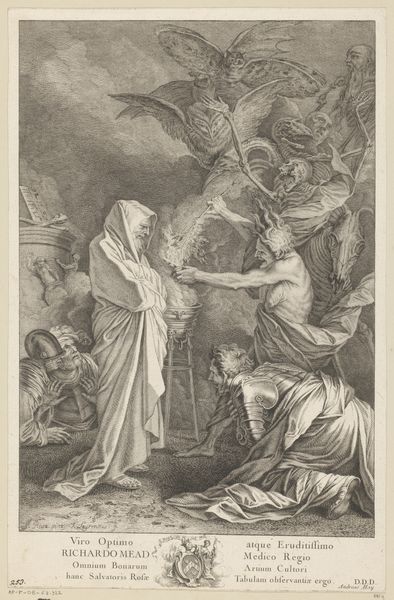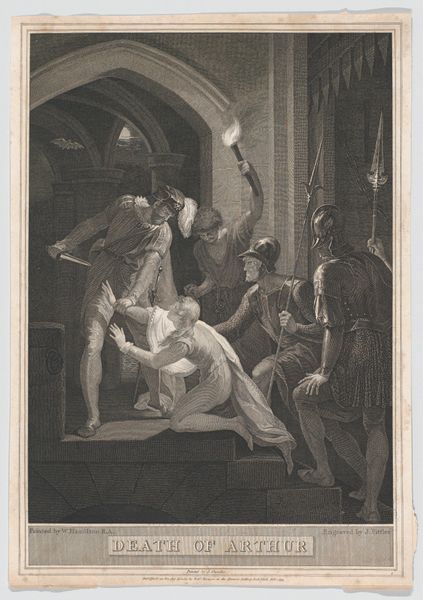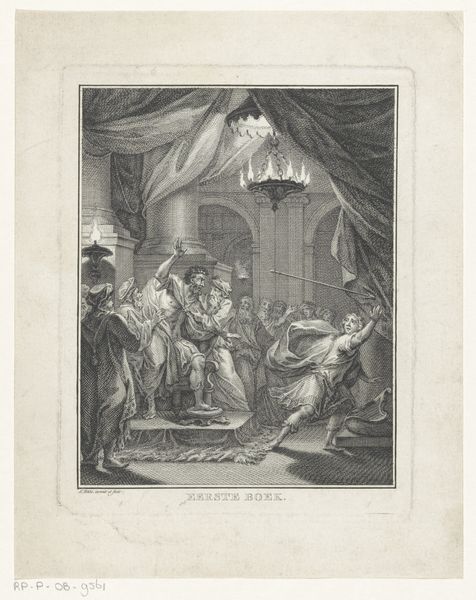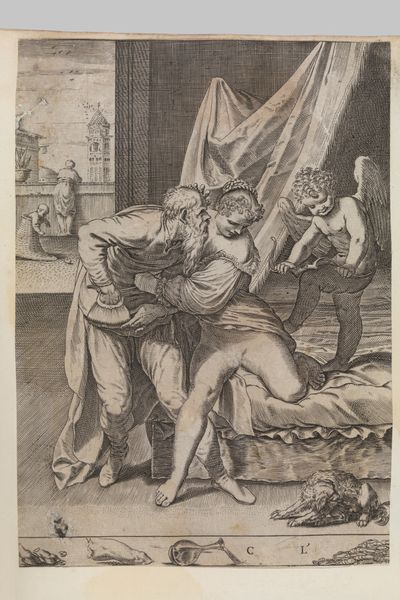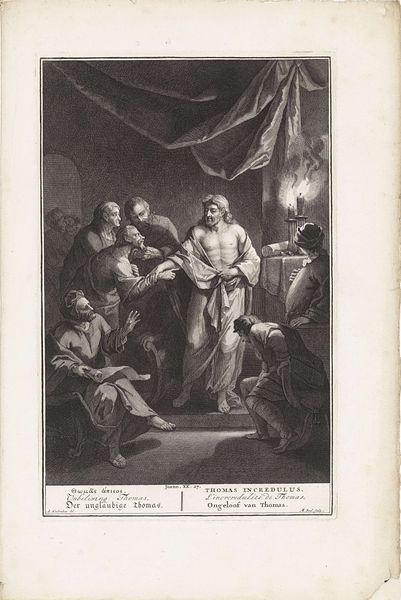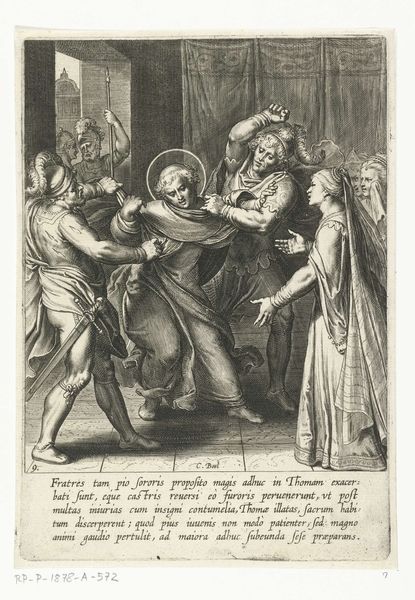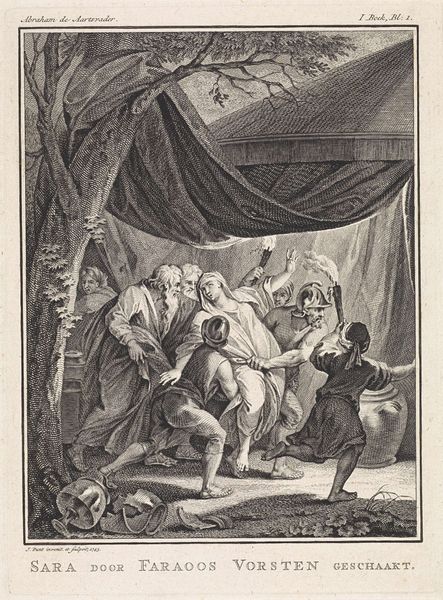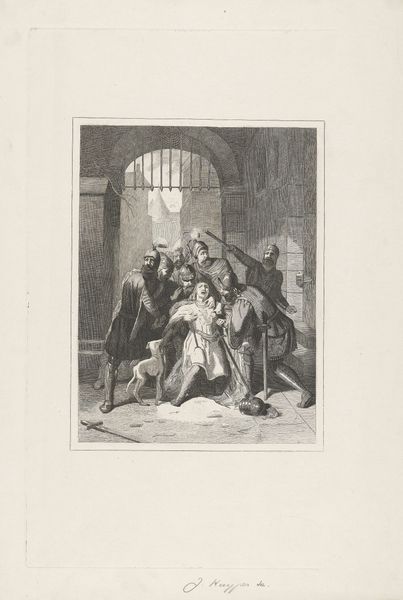
engraving
#
narrative-art
#
baroque
#
old engraving style
#
figuration
#
history-painting
#
engraving
Dimensions: height 363 mm, width 272 mm
Copyright: Rijks Museum: Open Domain
Editor: So, this is *Job op de mesthoop*, or Job on the Dunghill, an engraving, believed to be created sometime between 1704 and 1765 by Jan Lauwryn Krafft. It definitely evokes a feeling of suffering, but I’m curious about the woman pointing at him. What’s your interpretation of this work? Curator: Oh, Job! Krafft really captures the drama, doesn’t he? Notice how Job is the focal point but surrounded by these…accusatory figures. This isn't just about physical suffering. It's the theological debate playing out visually. Who do you think the artist wanted us to sympathise with? Editor: Probably Job? He looks pretty miserable sitting there. But that woman looks so angry. And what’s that flying devilish figure above? Curator: Exactly! She's usually identified as Job's wife, urging him to curse God. While his friends, clustered on the left, offer their dubious consolations. That hovering demon? Represents the source of Job's torment, unleashed with divine permission. The drama is heightened through that classical architectural backdrop, fragmented and crumbling just like Job's life, perhaps? Krafft seems to enjoy piling on the misery, no? Editor: I see what you mean. So, it's not *just* suffering, but questioning faith in the face of unbearable loss, too. It seems there's an entire philosophical discussion baked into the composition! Curator: Precisely. And look at how Krafft’s crosshatching creates a sense of grime and unease. Every line serves a purpose to depict moral, as well as physical, decay. Editor: This piece is a lot deeper than I first realized, seeing that everything, including his rendering technique, highlights the story being depicted! Thanks for making me see the image from another viewpoint.
Comments
No comments
Be the first to comment and join the conversation on the ultimate creative platform.
